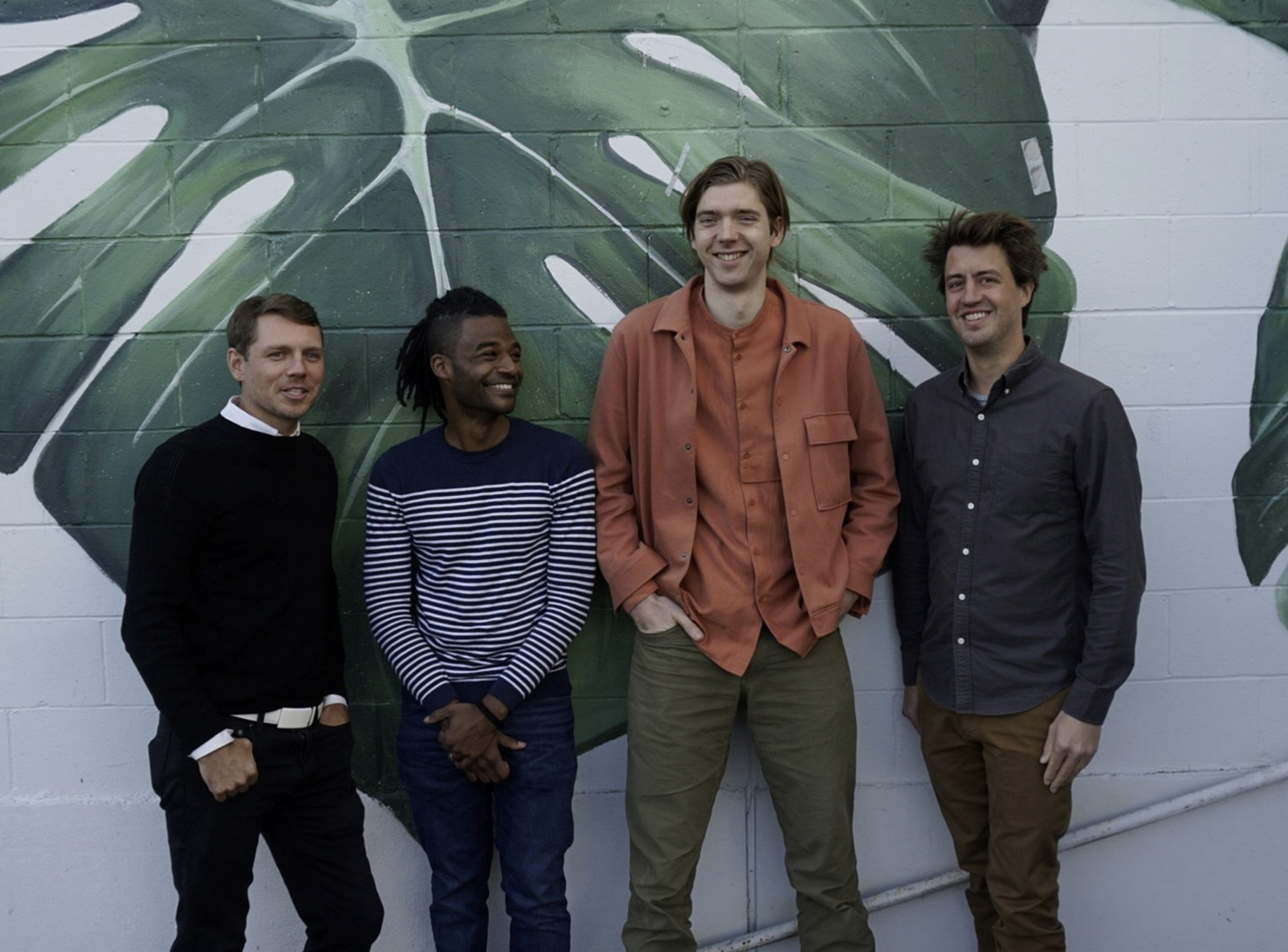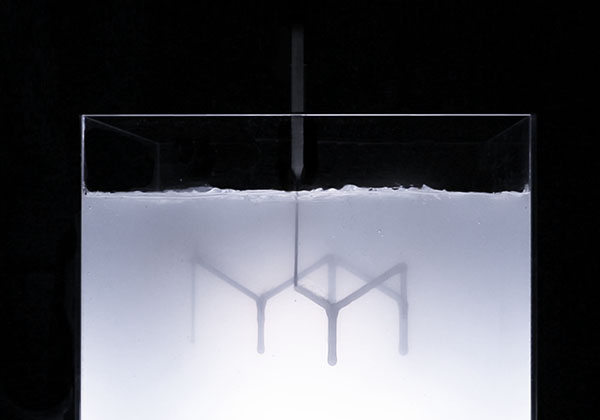Boston 3D printing company Rapid Liquid Print (RLP) is working to make a new class of 3D printers that can effortlessly build large-scale, high-resolution, soft, and stretchable products using industry-grade silicones in minutes. Using a printing process developed initially at the Self-Assembly Lab, housed at MIT’s International Design Center, RLP can create objects in 3D space in a liquid gel suspension, in what it’s hoping will become a game-changer for the 3D printing industry.
Now, the company has hit its biggest milestone to date, after raising funding in a seed round led by BMW i Ventures, the venture capital arm of BMW Group. With this new round, RLP will use the funds to develop its 3D printing solutions further and expand into new applications and materials. Also participating in the round was insurance firm MassMutual through its MM Catalyst Fund, which targets equity investments in Massachusetts technology companies based outside of Boston.
MIT is a pioneer in 3D printing innovations. Its rapid liquid printing process uses a robotic system and can create objects of any size. Although it’s not a traditional layer-by-layer process, this 3D printing technology draws the object’s shape freely in space in a liquid gel suspension. For it to work, two different materials are mixed inside the nozzle and then chemically cured––without the need to apply heat or UV light. The gel works as a suspension medium for the extruded material, so it doesn’t have to deal with gravity (a feature that would make it ideal for off-Earth 3D printing). Once the process is finished, the part is taken out of the gel and washed with water.
Although the printing process only takes a few minutes, there is no size limitation to what it can print. Furthermore, RLP not only addresses the limitations of 3D printing elastomers––like speed, size of the part, and use of low-grade materials––but it also removes the long lead times and high initial costs posed by traditional manufacturing of elastomers through injection molding.
Soon after developing the technology, four experts at MIT’s Self-Assembly Lab teamed up to set up RLP and make elastomeric printing easy. The firm was founded in 2018 by Bjørn Sparrman, who managed technical operations at the Self-Assembly Lab, and Schendy Kernizan, who previously co-directed and managed researchers and students at MIT’s Self-Assembly Lab, where he delivered projects for giants like Google, BMW, and Steelcase.
Since RLP’s inception, Kernizan has become its CEO, and Sparrman is leading the 3D printing technology development as Chief Technology Officer (CTO). The two are joined by co-founders Skylar Tibbits, co-director and founder of the Self-Assembly Lab and a pioneer in 4D printing, and research scientist Jared Laucks, the current director of the Self-Assembly Lab.
Thanks to this multi-talented team with a background in additive manufacturing (AM), novel fabrication techniques, and innovative production machine development, the company is creating large-scale objects from high-grade materials such as rubber, foams, and plastics in a matter of minutes, for a wide range of industries, including automotive, aviation, furniture and healthcare.

Rapid Liquid Print founders (from left to right): Skylar Tibbits, Schendy Kernizan, Bjørn Sparrman, and Jared Laucks. Image courtesy of RPL/BMW
After receiving an exclusive license from MIT for its technology, the team perfected the printing process. RLP believes that traditional 3D printing is “restricted by slow speeds, limited build volumes, and poor material quality,” inhibiting the technology’s mainstream adoption.
“We’ve spent years perfecting our technology and building a product that solves the pain points the 3D-printing industry has faced. RLP removes limits on design, can print large-scale and multiple objects at once, and is faster than any other solution currently on the market,” said Kernizan. “With this funding from BMW i Ventures and MM Catalyst Fund, we will accelerate our ability to offer a wide variety of solutions to a broader market.”
Learning about BMW’s financial backing in RLP’s seed round is no surprise, though. The Self-Assembly Lab and the car manufacturer collaborated on a 4D printing project that relied on rapid liquid printing technology. In August 2018, the duo announced they were working to create new “incredible shape-changing structures.” These inflatable structures were really closer to 4D printing than 3D printing, mainly because they leveraged MIT’s technique to develop layouts for car seats that could change their shape depending on the level of air pressure inside, in a project called “Liquid Printed Pneumatics.”

BMW and MIT’s Self-Assembly Lab liquid printed pneumatics project. Image courtesy of MIT’s Self-Assembly Lab.
They actually succeeded in creating inflatable prototypes, making this a promising undertaking, which gave the duo enough dynamism to continue its collaboration in the future. In fact, the printed inflatable material technologies that self-transform, adapt and morph from one state to another were showcased at the V&A Museum in London in November 2018.
Today, RLP says its technology can change the game for creating large-scale, elastomeric, airtight, and high-quality products in minutes. Its soft and stretchable outcomes are already part of global research for applications ranging from medical devices to footwear and home goods. Moreover, company founders believe that rapid liquid printing will be the future of 3D printing technology.
Subscribe to Our Email Newsletter
Stay up-to-date on all the latest news from the 3D printing industry and receive information and offers from third party vendors.
You May Also Like
Further Understanding of 3D Printing Design at ADDITIV Design World
ADDITIV is back once again! This time, the virtual platform for additive manufacturing will be holding the first-ever edition of ADDITIV Design World on May 23rd from 9:00 AM –...
3D Printer Maker EVO-tech Reborn as NEVO3D — Once More With Feeling
EVO-tech was a 3D printing service and original equipment manufacturer established in 2013 and based in Schörfling am Attersee, Austria. The company produced high-quality material extrusion systems featuring linear bearings,...
3D Systems Brings 3D Printed PEEK Cranial Implant to the U.S. with FDA Clearance
For more than 10 years, 3D Systems (NYSE:DDD) has worked hand-in-hand with surgeons to plan over 150,000 patient-specific cases, and develop more than two million instruments and implants from its...
CDFAM Returns to Berlin for Second Annual Symposium
The second CDFAM Computational Design Symposium is scheduled for May 7-8, 2024, in Berlin, and will convene leading experts in computational design across all scales. Building upon the first event...
































